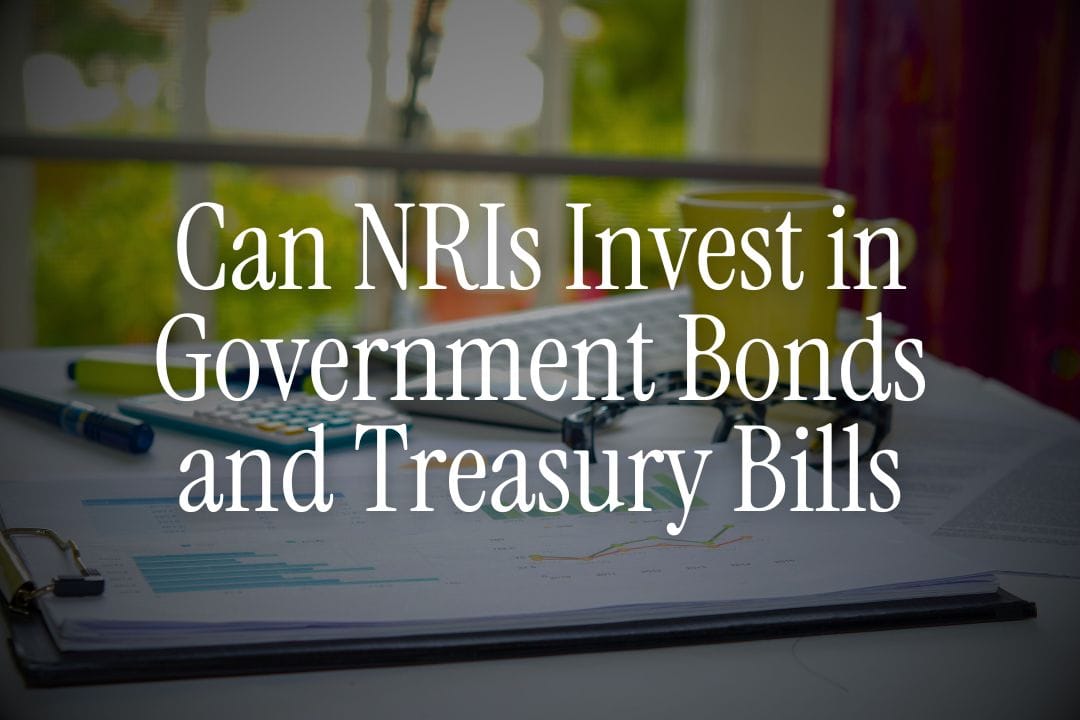
When you're living in Dubai or anywhere abroad, finding safe investment options back home can feel like navigating a maze. You want security, decent returns, and - most importantly - no tax headaches or repatriation nightmares.
We have helped thousands of NRIs at Belong to make smarter financial decisions.
But one question keeps coming up: "Can I invest in Indian government bonds? Are they better than NRI fixed deposits?"
The short answer? Yes, you absolutely can.
And for many NRIs, these instruments offer a compelling mix of safety, tax efficiency, and flexibility that traditional bank FDs simply can't match.
This guide covers everything you need to know - from understanding what government bonds actually are, to opening your first investment through RBI Retail Direct, to navigating the tax maze.
You'll also see exactly how returns stack up against GIFT City FDs and whether bonds deserve a spot in your portfolio.
Whether you're in the UAE, UK, or US, this article will help you decide if government bonds and treasury bills make sense for your situation.
And if you have questions along the way, our WhatsApp community is full of NRIs navigating the same decisions.
Yes, NRIs Can Invest - And Here's Why You Should Pay Attention
NRIs have been able to invest in government bonds and treasury bills since 2020, when the RBI introduced the Fully Accessible Route (FAR). This opened up certain government securities to non-residents without any investment ceiling.
What makes these instruments attractive?
Safety: These are backed by the Government of India. There's no credit risk, no chance of default. Your principal is guaranteed.
Better liquidity: Unlike many NRE or NRO fixed deposits that lock your money for years, government bonds and T-Bills can be sold in the secondary market before maturity.
Tax advantages in some cases: While interest is taxable, the tax treatment can be more favorable than FD interest, especially for long-term holdings.
No TDS on trading profits: If you buy and sell bonds in the secondary market, there's no TDS deduction - unlike FD interest which faces automatic 30% TDS for NRIs.
Diversification: If you already have money in mutual funds or equity, government securities add a safe, low-volatility anchor to your portfolio.
👉 Tip: Government bonds work best when you're looking for capital preservation and moderate, predictable returns. If you want higher yields and tax-free status, check out GIFT City USD FDs.
Understanding Government Bonds and Treasury Bills: The Basics
Before we dive into how to invest, let's clarify what these instruments actually are. Many NRIs confuse them with corporate bonds or even insurance products.
What Are Government Bonds (G-Secs)?
Government securities (G-Secs) are debt instruments issued by the Reserve Bank of India on behalf of the Central or State governments. When you buy a G-Sec, you're lending money to the government. In return, they pay you periodic interest (called a "coupon") and return your principal at maturity.
Key features:
- Tenures range from 5 years to 40 years
- Fixed interest payments, usually semi-annually
- No credit risk (sovereign guarantee)
- Tradeable in secondary markets
Also Read -How to Invest in Bonds - Beginner's Guide for NRIs
What Are Treasury Bills (T-Bills)?
Treasury Bills are short-term government securities with maturities of less than one year.
They're issued at a discount to face value and don't pay periodic interest. You earn the difference between the discounted purchase price and the face value at maturity.
Available tenures:
- 91 days
- 182 days
- 364 days
How they work: Let's say a 91-day T-Bill with a face value of ₹100 is issued at ₹98.50. You buy it for ₹98.50, and after 91 days, the government pays you ₹100. Your return is ₹1.50.
What About State Development Loans (SDLs)?
SDLs are bonds issued by individual Indian states to finance their spending needs. They work like G-Secs but are issued by state governments rather than the central government.
They typically offer slightly higher yields than central government bonds.
👉 Tip: If you're new to bonds, start with central government G-Secs or T-Bills. They're the safest and most liquid. Once you're comfortable, you can explore SDLs for marginally higher returns.
Why Should NRIs Consider Government Bonds Over Fixed Deposits?
I get this question all the time. You might be thinking, "I already have an NRE FD at 7%. Why bother with bonds?"
Here's the comparison:
Feature | NRE/NRO FDs | Government Bonds & T-Bills |
|---|---|---|
Safety | Bank guarantee (up to ₹5 lakh DICGC cover) | Sovereign guarantee (zero default risk) |
Liquidity | Penalty on premature withdrawal | Can sell anytime in secondary market |
Returns | 6.5% - 7.5% p.a. | 6.5% - 7.5% p.a. (varies with maturity) |
TDS | 30% TDS on interest | TDS on interest; no TDS on trading gains |
Repatriation | Fully repatriable (NRE) | Fully repatriable if bought via NRE account |
Lock-in | Fixed tenure, early exit = penalty | No lock-in, tradeable anytime |
Minimum investment | ₹10,000 - ₹1 lakh | ₹10,000 |
The key advantage? Flexibility. If you need your money before maturity, you can sell bonds in the secondary market without facing hefty penalties. With FDs, you often lose 1-2% in interest as a penalty.
Also, if interest rates fall in the future, your long-term government bond's value actually increases in the secondary market. With an FD, you're stuck with the original rate.
Also Read -DTAA for NRI Bank Interest: Can You Avoid 30% TDS Legally
Types of Government Securities Available to NRIs
Not all government securities are open to NRIs. Here's what you can and cannot invest in:
What NRIs CAN Invest In:
1. Government Securities (G-Secs) under FAR
These are specific bonds designated as "Fully Accessible" by the RBI. There's no investment ceiling. You can invest as much as you want. These bonds are clearly marked on the RBI Retail Direct platform.
2. Treasury Bills (T-Bills)
All three tenures - 91-day, 182-day, and 364-day - are open to NRIs. Great for parking short-term funds with complete safety.
3. State Development Loans (SDLs)
Bonds issued by Indian state governments. Slightly higher yields than central G-Secs. Fully accessible to NRIs.
4. Zero Coupon Bonds
These are issued at a deep discount to face value. You don't receive periodic interest - all your returns come at maturity. Any gains are taxed as capital gains, not interest income.
5. Capital Gain Bonds (Section 54EC Bonds)
If you've sold property in India and have long-term capital gains, you can invest up to ₹50 lakh per year in Section 54EC bonds issued by NHAI, REC, or PFC. These bonds have a 5-year lock-in and offer around 5-5.5% interest. The interest is taxable, but the investment helps you save capital gains tax.
Also Read -Tax Exemption Under Section 54 and Section 54F for NRIs
What NRIs CANNOT Invest In:
1. Sovereign Gold Bonds (SGBs)
As per FEMA guidelines, NRIs cannot make fresh investments in SGBs. If you invested as a resident Indian before moving abroad, you can hold them until maturity.
2. RBI Floating Rate Savings Bonds
These are not available to NRIs. Only resident Indians can invest.
3. Corporate Bonds from Private Companies
NRIs cannot invest in bonds issued by private sector companies. You're limited to government and PSU bonds.
Note: While direct retail investment in private corporate bonds by NRIs can be complex, NRIs can invest in corporate bonds through certain routes like FPI (Foreign Portfolio Investor) or NCDs (Non-Convertible Debentures) listed on stock exchanges, though it's not as straightforward as G-Secs via Retail Direct. (Source)
Eligibility and Account Requirements
Who Can Invest?
- Non-Resident Indians (NRIs)
- Overseas Citizens of India (OCIs)
- Person of Indian Origin (PIOs)
You must have either an NRE account or NRO account with an Indian bank.
What You Need Before You Start:
- Valid passport
- PAN card (Get one if you don't have it)
- Aadhaar card (optional but helpful for faster KYC)
- NRE or NRO bank account linked to an Indian bank
- Tax Residency Certificate (TRC) from your country of residence (needed if you want to claim DTAA benefits)
👉 Tip: Use your NRE account for investments you plan to repatriate abroad. Use your NRO account if you're earning and spending the money in India. More on repatriation later.
Tax Implications: What You Really Need to Know
This is where NRIs get confused. Let me break it down clearly.
Interest Income from Bonds
Tax rate: Interest earned on government bonds is added to your income and taxed at slab rates. For NRIs, this usually means 30% plus applicable surcharge and cess.
TDS: No TDS is deducted on interest payments from government securities. But you're still required to report this income and pay tax when you file your ITR.
Capital Gains on Sale of Bonds
If you sell your bond before maturity in the secondary market, any profit is treated as capital gains.
Bond Type | Holding Period for STCG | STCG Tax Rate | Holding Period for LTCG | LTCG Tax Rate | Indexation Available? |
|---|---|---|---|---|---|
Listed Bonds | \< 12 months | Slab rates (up to 30%) + cess | > 12 months | 12.5% + cess | No |
Unlisted Bonds | Any period (post Jul 23, 2024) | Slab rates (up to 30%) + cess | N/A (always STCG) | N/A | N/A |
(Source: Income Tax, Clear Tax, Economic Times)
TDS on T-Bills This is a common misconception! TDS is generally not deducted at source on T-Bill maturity for retail investors. The investor is responsible for reporting and paying the tax.
T-Bills are considered short-term capital assets, and gains are short-term capital gains. While these gains are taxable. (Source)
Using DTAA to Reduce Tax
India has signed Double Taxation Avoidance Agreements (DTAA) with over 90+ countries, including the UAE, US, UK, Canada, and Australia. If you pay tax on bond income in your country of residence, you can claim credit in India or vice versa.
To claim DTAA benefits:
- Obtain a Tax Residency Certificate from your country's tax authority
- Submit Form 10F to the Indian Income Tax Department
- Provide documentary evidence when filing your return
For example, if you're in the UAE and covered under India-UAE DTAA, you can avoid double taxation on interest income.
👉 Tip: Keep all documentation handy - TRC, Form 10F, investment statements - when you file your taxes. Consult a CA if your income is complex. At Belong, we can help connect you with trusted tax advisors through our WhatsApp community.
How to Invest: Step-by-Step Through RBI Retail Direct
The easiest way to invest is through RBI Retail Direct, a platform launched by the Reserve Bank specifically for retail investors, including NRIs.
(Source: RBI Retail Direct)
Step 1: Register on RBI Retail Direct
- Visit https://rbiretaildirect.org.in/
- Click on "Register"
- Enter your basic details: name, email, mobile number
- Verify with the OTP sent to your mobile
Step 2: Complete Your KYC
You have two options:
Option A: Online KYC (if you're in India)
- Link your Aadhaar
- Upload your PAN
- Complete video KYC if required
Option B: Offline KYC (if you're abroad)
- Download the KYC form from the portal
- Get it attested by an Indian embassy or a notary
- Upload scanned copies of your passport, PAN, address proof
- Mail the physical documents to the RBI address provided
The KYC process can take 5-7 working days for NRIs abroad.
Step 3: Link Your NRE or NRO Bank Account
Once your KYC is approved, link your Indian bank account. This is where your interest payments will be credited and where funds will be debited when you buy bonds.
Choose:
- NRE account if you plan to repatriate funds abroad
- NRO account if you're using Indian income and keeping funds in India
Step 4: Add Nominee Details
Enter nominee information. This is mandatory.
Step 5: Start Investing
Once your account is active, you can:
Buy in Primary Market: Participate in new auctions for G-Secs, T-Bills, and SDLs. You bid for the bonds and, if successful, they're allotted to you at the cut-off yield.
Buy in Secondary Market: Purchase bonds that are already issued and trading on the market. You can see live prices and yields, and buy instantly.
Step 6: Monitor and Manage
Your holdings are visible in your RBI Retail Direct dashboard. You can:
- Track interest payments
- Check bond valuations
- Sell bonds in the secondary market anytime
👉 Tip: Start small. Buy a 91-day or 182-day T-Bill first to understand how the platform works. Once you're comfortable, explore longer-term G-Secs and SDLs.
Repatriation Rules: Can You Take Your Money Abroad?
Yes, but the rules depend on which account you use.
Investing Through NRE Account
Fully repatriable. Both your principal and interest can be transferred abroad without any limit or approval. No paperwork needed.
This is the best option if you want to move funds to your foreign bank account later.
Investing Through NRO Account
Partially repatriable. You can repatriate up to USD 1 million per financial year from your NRO account after paying applicable taxes. You'll need to:
- File Form 15CA and 15CB
- Get a Chartered Accountant's certificate
- Submit these to your bank
For most NRIs, the USD 1 million annual limit is sufficient. But if you're making large repatriations (say, from property sales), plan accordingly.
Current Returns: What Can You Expect?
Returns on government securities fluctuate based on RBI policy rates, inflation, and market demand. Here's the approximate range:
Instrument | Tenure | Current Yield Range |
|---|---|---|
91-day T-Bill | 3 months | ~5.4% - 5.5% |
182-day T-Bill | 6 months | ~5.5% - 5.6% |
364-day T-Bill | 1 year | ~5.6% - 5.7% |
5-year G-Sec | 5 years | ~6.1% |
10-year G-Sec | 10 years | ~6.50% - 6.52% |
SDL | 5-10 years | ~7.0% - 7.4% (premium to G-Secs) |
(Source: CCIL Tenorwise Yields, Tradingeconomics -10 year bond, Tradingeconomics - 3 month bill The Economics Times)
How do these compare to FDs?
NRE FD rates from top banks currently range from 6.5% to 7.5% for 1-3 year tenures. So government securities offer comparable returns with better liquidity.
But if you want higher returns and tax-free interest, GIFT City USD FDs offer 4% - 5% in USD with zero tax and full repatriation. When you factor in rupee depreciation and tax savings, GIFT City FDs often beat both Indian FDs and G-Secs on an after-tax, dollar-adjusted basis.
Risks You Should Be Aware Of
Government bonds are among the safest investments, but they're not risk-free in every sense.
1. Interest Rate Risk
If RBI increases interest rates after you buy a bond, newer bonds will offer higher yields. This means your bond's value in the secondary market will fall. If you hold till maturity, this doesn't matter - you'll still get your principal and coupon. But if you need to sell early, you might face a loss.
Mitigation: If you think rates will rise, stick to short-term T-Bills (91 or 182 days). If rates are falling, lock in long-term bonds to benefit from higher yields.
2. Inflation Risk
If inflation rises faster than your bond's yield, your real returns (after adjusting for inflation) can turn negative. For example, if your bond pays 6.5% but inflation is 7%, you're effectively losing purchasing power.
Mitigation: Diversify. Don't put all your money in bonds. Include equity mutual funds or real estate for inflation protection.
3. Currency Risk (for NRIs)
Government bonds pay in rupees. If the rupee weakens against your base currency (say, USD or AED), your returns in foreign currency terms will be lower.
Example: You invest ₹10 lakh when the exchange rate is ₹83 per USD (about $12,048). After 5 years, you get ₹14 lakh (with interest), but the exchange rate is now ₹90 per USD. You only get $15,555 - not the $16,867 you expected at the old rate.
Mitigation: Consider GIFT City USD FDs or FCNR deposits to eliminate currency risk entirely.
4. Liquidity Risk (for SDLs and some G-Secs)
While G-Secs and T-Bills are highly liquid, some State Development Loans (SDLs) may not have active secondary market trading. If you need to sell urgently, you might not find a buyer quickly.
Mitigation: Stick to central government G-Secs and T-Bills if liquidity is a concern.
Common Mistakes NRIs Make When Investing in Bonds
1. Not Claiming DTAA Benefits
Many NRIs pay 30% tax in India on bond interest and then also report it (and pay tax) in their country of residence. You're paying tax twice! Always file for DTAA relief. Get a Tax Residency Certificate and Form 10F sorted.
2. Using NRO Account Instead of NRE
If you plan to repatriate funds, always use your NRE account for investments. NRO accounts have a USD 1 million annual repatriation limit and require extra paperwork.
3. Ignoring the Impact of TDS on T-Bills
T-Bills don't pay periodic interest, but the gain at maturity is taxable and subject to TDS. Many NRIs are surprised when 30% is deducted at maturity. Plan for this in your cash flow.
4. Buying Long-Term Bonds When Rates Are Rising
If RBI is in a rate-hike cycle, avoid locking into long-term bonds. Your bond's market value will fall, and you'll be stuck with a lower yield compared to new issues.
5. Not Diversifying Beyond Bonds
Government bonds are safe, but they won't make you rich. Don't put 100% of your portfolio in bonds. Allocate to equity mutual funds, real estate, or alternative assets for growth.
👉 Tip: A balanced NRI portfolio might be 30-40% bonds/FDs, 40-50% equity, and 10-20% in alternatives like gold or GIFT City funds. Adjust based on your risk appetite and goals. Join our Belong WhatsApp community to discuss portfolio strategies with fellow NRIs.
Comparing Government Bonds with Other Safe Investment Options
Here's how government bonds stack up against other popular NRI safe-haven investments:
Feature | G-Secs/T-Bills | NRE FD | GIFT City USD FD | FCNR FD |
|---|---|---|---|---|
Returns | 6.5% - 7.2% p.a. | 6.5% - 7.5% p.a. | 4.5% - 5.5% p.a. (USD) | 2% - 4% p.a. (USD) |
Currency | INR | INR | USD | USD/GBP/EUR |
Taxation | Interest taxable; LTCG at 20% | Interest taxable at 30% TDS | Tax-free | Tax-free |
Repatriation | Full (NRE); USD 1M limit (NRO) | Full (NRE); USD 1M limit (NRO) | Full, no limit | Full, no limit |
Liquidity | High (secondary market) | Low (penalty on early exit) | Low (lock-in 1-5 yrs) | Low (lock-in 1-5 yrs) |
Risk | Zero credit risk | Bank risk (DICGC insured up to ₹5L) | Bank risk (IFSCA regulated) | Bank risk |
Best for | Short to medium term, flexibility | Fixed tenure, higher INR returns | Dollar stability, tax-free returns | Currency hedging |
Bottom line: If you want liquidity and safety in rupees, government bonds are excellent. If you want tax-free returns and dollar stability, GIFT City FDs win. If you want highest rupee returns, stick with top NRE FDs.
Conclusion: Should You Add Government Bonds to Your Portfolio?
Government bonds and treasury bills are a solid, safe option for NRIs who want:
Zero credit risk - backed by the Government of India
Flexibility - sell anytime in secondary markets without penalties
Decent returns - comparable to NRE FDs
Diversification - a stable anchor in a volatile equity portfolio
They're especially useful for parking short-term funds (T-Bills) or building a conservative long-term portfolio (5-10 year G-Secs).
But remember:
- Interest is taxable (unless you claim DTAA relief)
- Currency risk exists (rupee depreciation affects dollar returns)
- Returns are moderate - don't expect FD-beating performance
If you want tax-free, dollar-denominated returns, GIFT City USD FDs offer a compelling alternative. You can explore them on the Belong app, which also helps you compare FD rates, track rupee vs dollar trends, and calculate your residential status.
And if you're still figuring out the right mix of bonds, FDs, mutual funds, and equity investments, join our WhatsApp community. It's a space where NRIs share real experiences, ask tough tax questions, and help each other make smarter financial decisions.
Ready to start?
Download the Belong app to access GIFT City FDs, compare investment options, and get personalized guidance from our team.
Sources
- Reserve Bank of India - Fully Accessible Route
- RBI Retail Direct Platform
- Income Tax Department - NRI Taxation
- CCIL - Tenorwise Indicative Yields
- ClearTax - NRI Income Tax Guide
- ICICI Bank - NRI Investment Options
- India-Briefing - NRI Funding & Repatriation
Disclaimer: This article is for educational purposes only and does not constitute financial advice. Tax laws and investment regulations are subject to change. Please consult a SEBI-registered investment advisor or chartered accountant before making investment decisions. Past performance is not indicative of future results.




